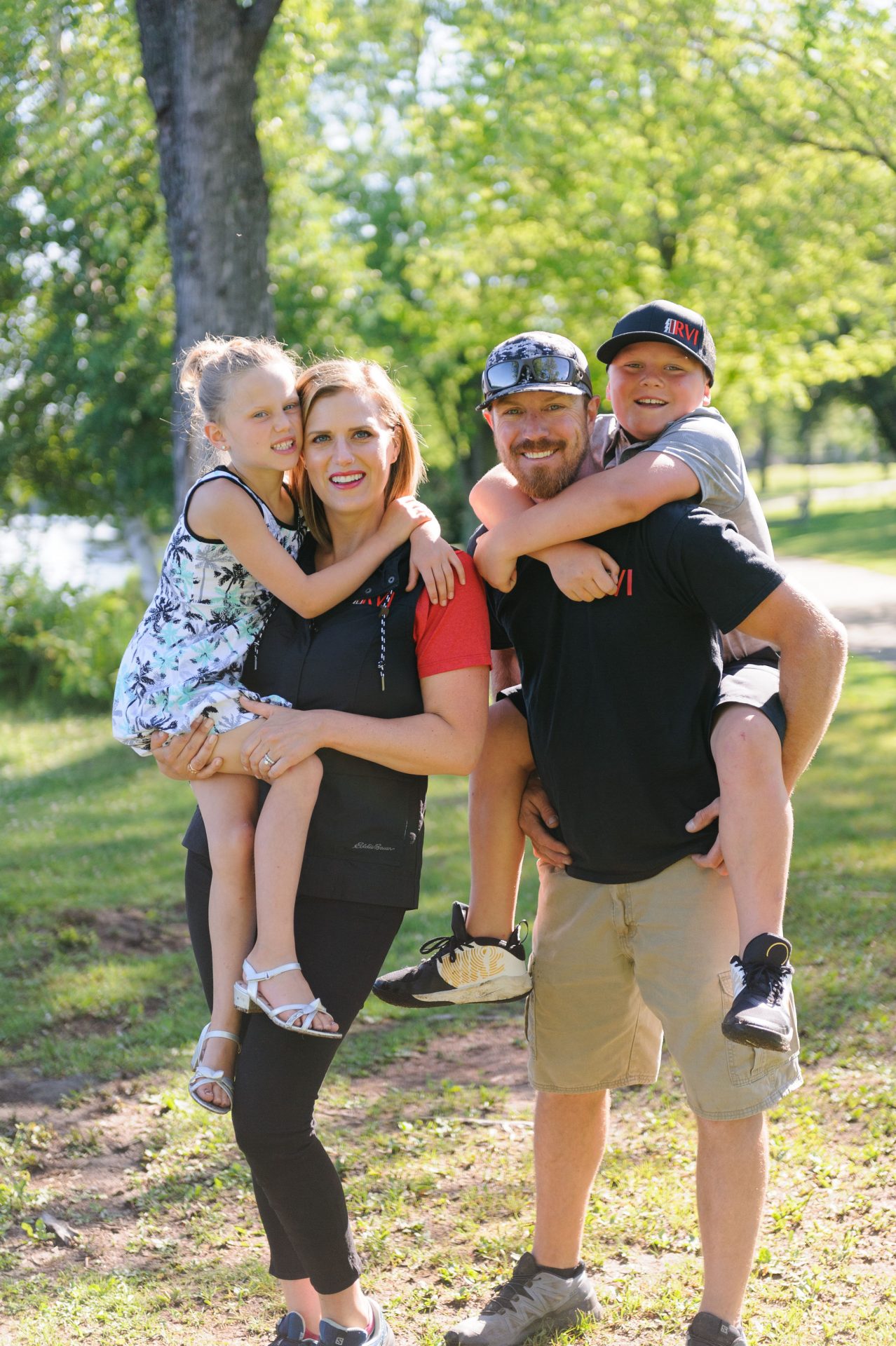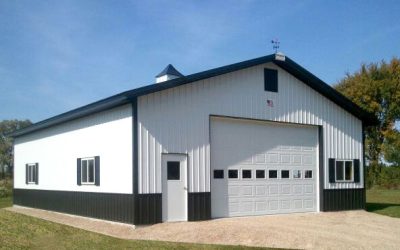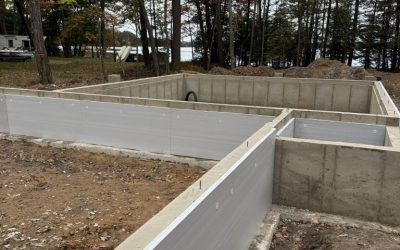Our latest article explored the advantages of the BIBS® (Blow-In Blanket) insulation system as part of our ongoing educational series about insulation basics. The BIBS® system uses dense-packed fiberglass blown into structural cavities, creating a seamless, high-performance blanket around obstructions like wires and pipes.
To review, we highlighted eight key benefits of BIBS®. These features make BIBS® highly effective and environmentally friendly:
- Higher efficiency R-Values for better energy savings
- Reduced air infiltration by up to 68%
- Excellent sound control
- Non-settling properties
- Safety from fire and mold
- Improved indoor air quality
- Certified installation ensuring trusted performance
- Made from recycled content
The builders we partner with favor BIBS for its profitability, enhanced home performance, and energy-conscious appeal. At the same time, homeowners appreciate the added comfort, lower utility bills, and high return on investment that BIBS provides.
Let’s wrap up this blog series by comparing BIBS side-by-side with the three other primary insulation types: fiberglass batts, wet-sprayed cellulose, and urethane foams.
Fiberglass Batts vs. BIBS
Fiberglass batts are an insulation material commonly used in residential and commercial buildings to insulate walls, attics, and other spaces. They are made from glass fibers and a binder, and are often pre-cut into flat pieces that resemble small blankets.
Fiberglass bats facts:
- Manufactured to precise sizes in a factory
- Harder to install in non-conforming spaces
- Takes longer
- Doesn’t fit perfectly
- Often compressed or has voids
- Harder to get a good fit around wires, pipes, obstructions
- Lower fiber density, lower R-values
Why BIBS is better than fiberglass bats:
- Custom-manufactured on-site for each cavity
- Completely fills around obstructions
- Eliminates voids, air gaps
- No compression or settling
- 2-2 ½ times the fiber density for better thermal value and lower air infiltration
Wet-Sprayed Cellulose vs. BIBS
Wet-sprayed cellulose insulation is a type of insulation made from recycled paper that is mixed with water and sprayed into walls to insulate and air seal. It’s also known as damp-spray cellulose or wall-spray cellulose insulation.
Wet-sprayed cellulose insulation facts:
- Paper insulation, water, and adhesive sprayed in the cavities
- Excess scraped off and re-used
- Up to 50% water content
- Long drying period
- May cause corrosion, mold, mildew
- Fire-retardant chemicals may lose effectiveness after drying
- Few industry controls
- R-value only 3.6 per inch
Why BIBS is better than wet-sprayed cellulose:
- Clean, environmentally-friendly fiberglass, blown dry behind netting
- Naturally non-flammable
- Cannot support mold growth
- Walls can be drywalled immediately
- Strict industry controls
- R-value of 4.2 per inch (17% higher than Wet Cellulose)
Urethane Foam vs. BIBS
Polyurethane foam insulation, also known as spray polyurethane foam (SPF), is sometimes used to insulate buildings and seal gaps. We’ve written extensively about spray foam in the past.
Urethane foam insulation facts:
- Made from petrochemicals
- Low-density, open-cell foams: Much lower R-values / (3.6 – 3.7 per inch) / Much higher price
- High-density, closed-cell foams: Higher R-values, very expensive
- Must be protected from flame
- Poor sound control
- Requires sealing and caulking to prevent air infiltration
Why BIBS is better than urethane foam:
- Made from fiberglass, which is safe and environmentally friendly
- R-value 4.2 per inch out-performs foams
- Safe, non-flammable material
- Excellent sound control
- Prevents air infiltration when properly installed
Side-by-Side Comparisons
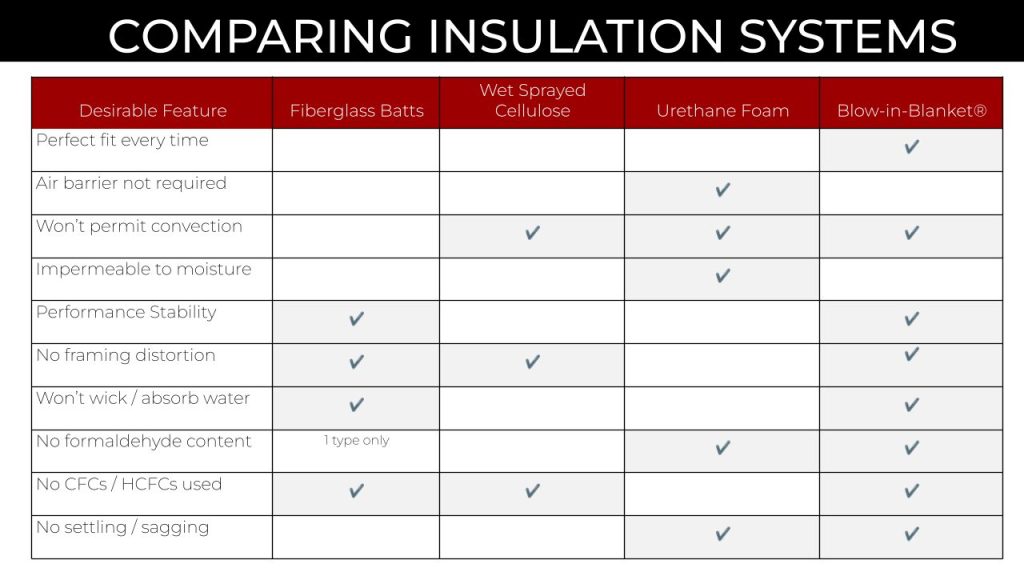
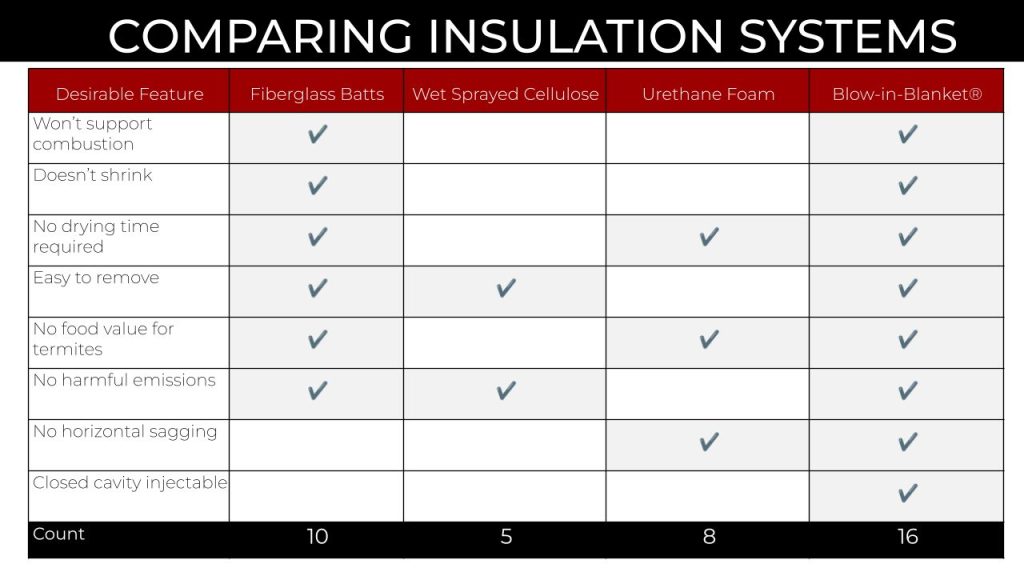
Side-by-Side Comparisons
As you can see, BIBS is the superior choice for residential insulation! R-Value Insulators offers professional, certified BIBS installations in Northern Wisconsin that promise cost-effective, comfortable, and sustainable building solutions. Contact us to learn how we can help improve your home or building project with BIBS insulation!

